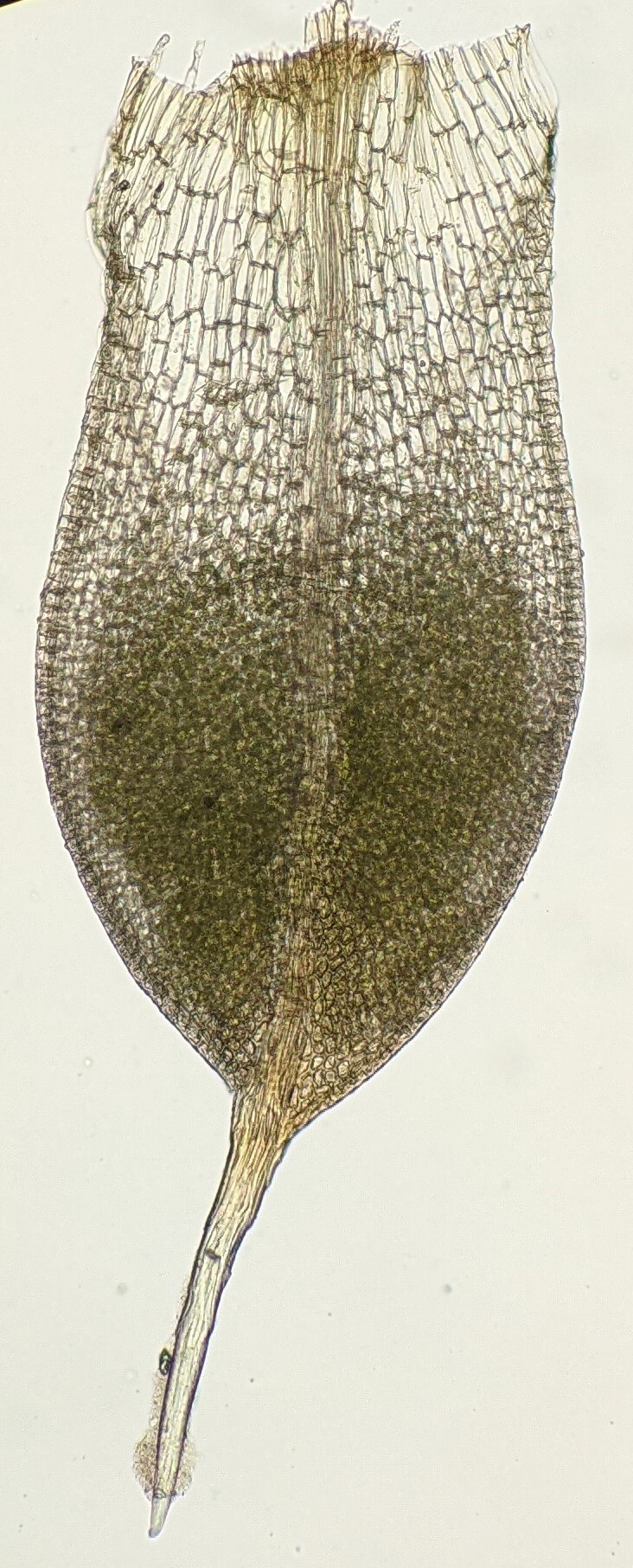Pterygoneurum
Autoicous, cladautoicous or paroicous. Asexual reproduction by rhizoidal tubers. Scattered plants or turves on soil or occasionally rock (not in Victoria). Stem erect, occasionally dichotomously branched, densely covered by rhizoids; central strand present; sclerodermis absent; hyalodermis absent. Leaves ovate, elliptic, oblong, ligulate, obovate or spathulate, erect-spreading when moist., appressed when dry; apex rounded, obtuse or mucronate, often with a smooth or denticulate hairpoint; costa subpercurrent, percurrent or excurrent, with 2–4 longitudinally inserted photosynthetic lamellae adaxially, sometimes with photosynthetic filaments arising from both sides of lamellae, without an adaxial stereid band, with a hydroid strand, with a weak abaxial stereid band, with a differentiated abaxial epidermis, with rectangular or elongate superficial cells abaxially; margin entire or denticulate to dentate near apex, incurved or recurved (not in Victoria) in apical half or midleaf, otherwise plane, without a border; laminal cells in apical half quadrate, rhomboid or short-rectangular, smooth or pluripapillose abaxially or on both surfaces (not in Victoria), with a yellow KOH reaction; basal cells differentiated equidistant from base from margin to costa or occasionally extending further near costa, rectangular, smooth. Acrocarpous. Capsule erect, straight, ovoid to cylindric, immersed (not in Victoria), emergent or exserted, with or without an annulus, operculate or rarely cleistocarpous (not in Victoria). Calyptra cucullate or mitrate, smooth, glabrous. Operculum rostrate. Peristome absent or rudimentary (not in Victoria).
Nine species, widespread through temperate regions, usually in arid or semi-arid areas; two species in Victoria.
The development of filaments on the lamellae in some species suggests a close relationship of this genus to Crossidium (Frey et al. 1990) and some species of Tortula approach Pterygoneurum in most characters, including the flask-shaped protuberant adaxial costa cells of some species that may be a less pronounced precursor state that eventually led to the lamellae of Pterygoneurum (Zander 1993). The close relationship between these genera is supported by phylogenies of chloroplast rps4 sequences which show species of these genera intermixed in a group (Werner et al. 2002) and it is likely that Tortula will need to be revised to incorporate these genera. Phylogenetic reconstruction of this group of mosses is still in its infancy with few species having been sampled and only one chloroplast region having been sequenced. Until Tortula and its close relatives are further studied in more detail, and the boundaries of Tortula are better clarified, Pterygoneurum is tentatively retained here.
 Spinning
SpinningFrey, W.; Herrnstadt, I.; Kürschner, H. (1990). Pterygoneurum crossidioides (Pottiaceae, Musci), a new species to the desert flora of the Dead Sea area. Nova Hedwigia 50: 239–244.
Werner, O.; Ros, R.M.; Cano, M.J.; Guerra, J. (2002). Tortula and some related genera (Pottiaceae, Musci): phylogenetic relationships based on chloroplast rps4 sequences. *Plant Systematics and Evolution * 235: 197–207.
Zander, R.H. (1993). Genera of the Pottiaceae: Mosses of harsh environments. Bulletin of the Buffalo Society of Natural Sciences 32: 1–378.

